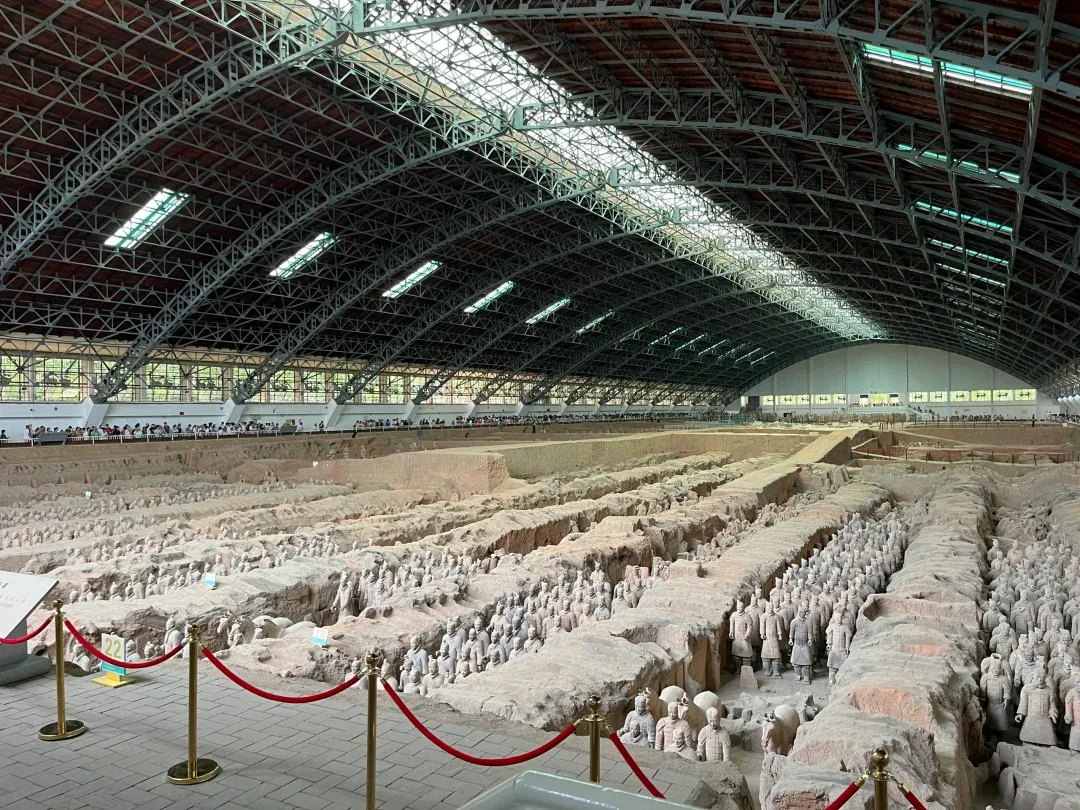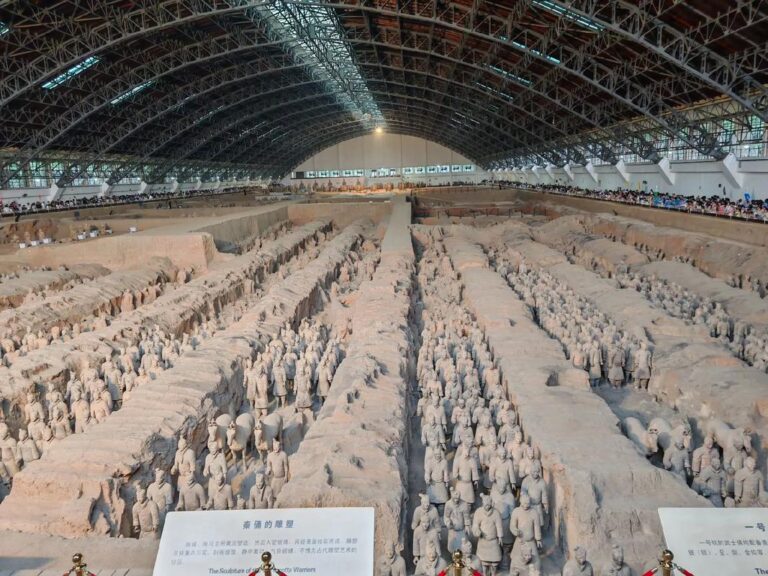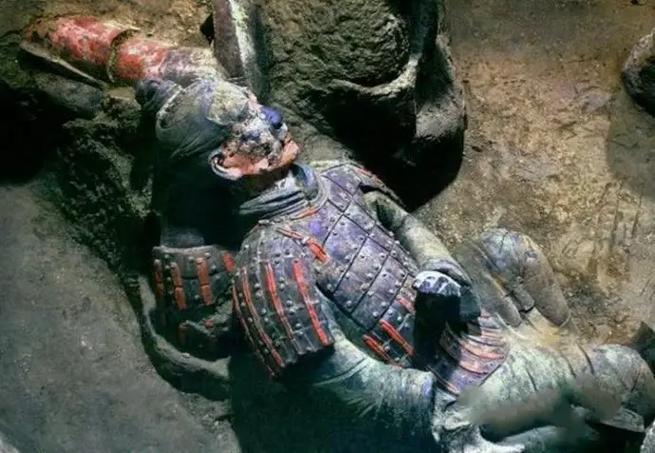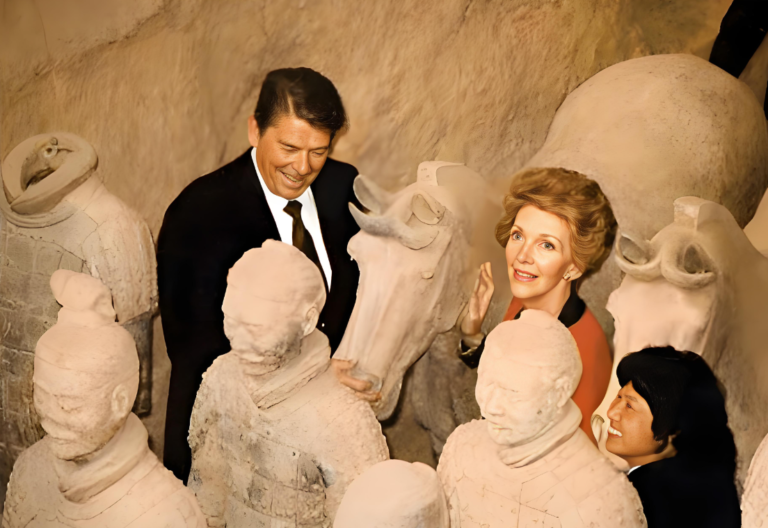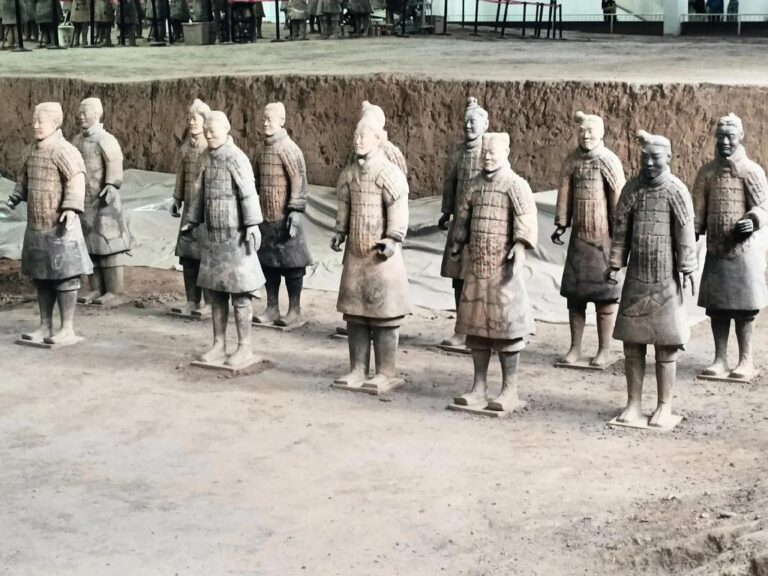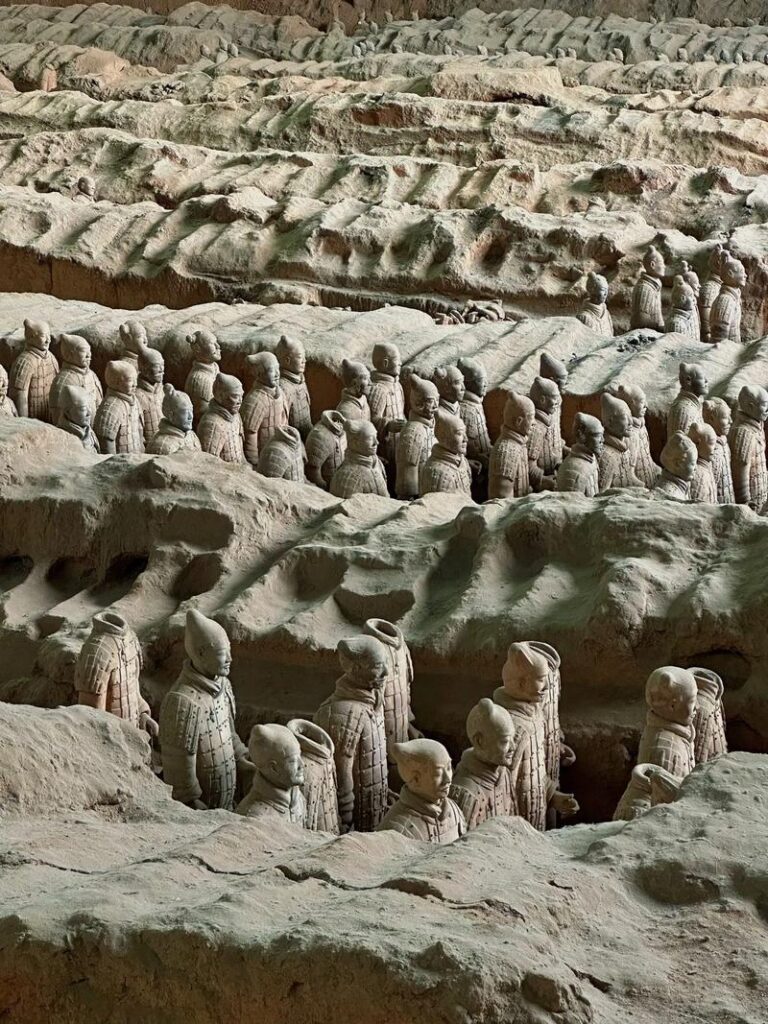How much of the Terracotta Army has been dug up?
How many of the Sleeping Army have been unearthed? Revealing the number of terracotta warriors discovered
Standing at the edge of the magnificent terracotta warrior pits, facing this “underground army” of Emperor Qin Shi Huang from over 2,000 years ago, one cannot help but be awe-struck by its scale. A natural question arises: “How many terracotta warriors have we actually unearthed so far?” Today, I will take you behind the scenes to uncover this mystery and see how many soldiers from this massive “terracotta army” have been “brought back to light.”
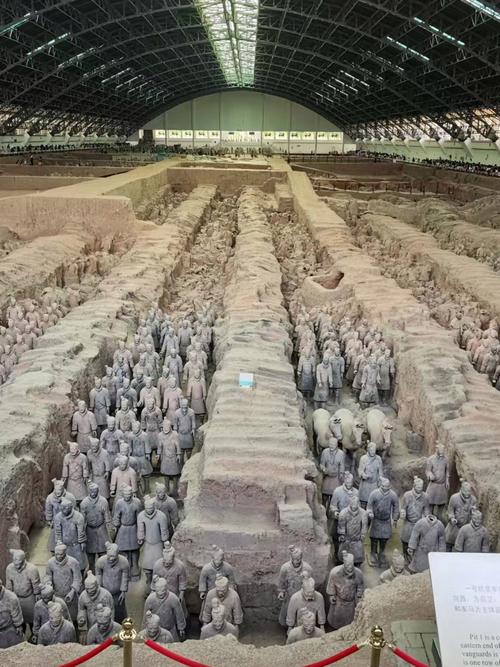
1: The “tip of the iceberg” of the massive army
First, let’s take a look at the “full picture” of the terracotta warriors. Through exploration, archaeologists estimate that there are approximately 8,000 life-sized terracotta figures (including soldiers, officers, civil officials, and acrobats) as well as hundreds of terracotta horses and chariots buried in the entire area of Emperor Qin Shi Huang’s mausoleum.
So, how many have been excavated so far?
Total: After nearly 50 years of archaeological work, approximately 2,000 complete or restorable terracotta warriors and horses have been unearthed from the three main pits (Pit 1, Pit 2, and Pit 3) and several smaller subsidiary pits. This figure includes those already restored and on display, as well as those still awaiting restoration in laboratories.
Visualization: Imagine that 8,000 terracotta warriors are like a super-sized football team (we know American football teams are large, but not this big!). Currently, we have only “awakened” and brought approximately one-quarter of the “players” from underground to the “training field” (museum). The remaining three-quarters of the ‘players’ are still “sleeping” underground.
II: Excavation Progress of Each “Camp”
The three main pits of the terracotta warriors are like different “camps,” and their excavation progress varies:
1. Pit 1: “Main Infantry Camp”
Largest in scale: This was the first pit discovered and the largest in area (equivalent to more than two standard football fields!).
Most excavated: Excavation work in Pit 1 has been conducted in several phases. Currently, approximately 2,000 terracotta warriors and horses (including chariots) have been unearthed from Pit 1. This is also the most spectacular array on display in the exhibition hall.
On-site display: In the front half of the pit, visitors can see over 1,000 terracotta warriors that have been restored and re-arranged in formation, creating a majestic sight. In the back half of the pit, there are large piles of un-restored terracotta warrior fragments, carefully covered and awaiting future “puzzle-like” restoration work. This directly demonstrates the ongoing process of excavation and restoration.
2. Pit 2: “Special Forces Base”
Most complete range of troop types: The formation here is complex, featuring a mixed array of crossbowmen, cavalry, charioteers, and infantry.
Most cautious excavation: To protect the precious artifacts (particularly due to concerns that the techniques for preserving the painted decorations are not yet perfected), Pit 2 has adopted a strategy of “excavating, displaying, and protecting simultaneously.” Currently, only a small portion of the area has been formally excavated, yielding approximately 200 exquisite terracotta figures, including famous “star players” such as kneeling archers, standing archers, generals, and cavalrymen. Most of the area remains covered by wooden structures and soil, awaiting future technological advancements before being uncovered.
Huge potential: Experts estimate that after the complete excavation of Pit 2, over 1,000 terracotta warriors and horses may be unearthed. So, what we see now is just a small part of it.
3. Pit 3: “The High Command”
Smallest in scale: Its area is equivalent to the size of a corner of a football field.
Relatively Complete Excavation: Excavation of Pit 3 is largely complete, yielding approximately 70 clay figurines and one chariot. The clay figurines here are arranged in a unique manner, forming a protective ring, and are believed to represent the command center of the entire army.
Tragic incident: As you may have heard, just a few days ago (May 30, 2025), a man jumped into Pit 3, damaging two precious warrior figurines. This serves as a reminder that even for already excavated precious artifacts, conservation efforts must never be relaxed.
Summary of excavated clay figurines (including horses) in each pit:
Pit 1: Approximately 2,000 (of which about 1,000 have been restored and exhibited)
Pit 2: Approximately 200+ (partially excavated)
Pit 3: Approximately 70
Other small pits: A small number (such as civil official figurines, acrobat figurines, etc.)
Total unearthed: Approximately 2,000 (restorable)
3: Why not excavate them all? “Sleeping” is also a form of protection
Since we know there are still so many terracotta warriors buried underground, why not excavate them all? The reason is very important and reflects modern archaeological and cultural heritage preservation principles:
1. Conservation technology is still advancing: One of the most heartbreaking losses of the terracotta warriors is their color. When first unearthed, they had vibrant painted decorations (clothing, skin, and eyes were all colored!). However, due to limited technology at the time, much of the paint curled, peeled off, and disappeared within minutes of exposure to air. Today, scientists have developed “moisturizing mask” technology (similar to applying a mask to protect the colors) and “air curtains” (using high-speed airflow to block external pollution). However, preserving such a large quantity of fragile painted details remains a massive challenge. A hasty large-scale excavation of Pit 2 could result in even more colors being lost forever. Experts emphasize, “Preservation is more important than excavation.”
2. Restoration is a massive “puzzle” project: The pile of fragments visible behind Pit 1 is the best evidence of this. The terracotta warriors were not buried intact underground. Historically, they have endured destruction (such as ancient warfare), collapse (due to rotting wooden supports and soil pressure), and were mostly fragments when unearthed. Restoring a single ordinary terracotta warrior is like assembling an extremely complex 3D puzzle without a blueprint, typically requiring 2–3 experts working for 8–10 months! The more fragments and the greater the complexity (such as high-ranking officer figures), the longer it takes. Imagine if thousands of figures were unearthed at once—restoration alone would require hundreds of people working for decades, or even centuries! Human resources and materials are limited.
3. Preserving a “treasure” for future generations: Archaeological techniques and conservation concepts are constantly evolving. Leaving some terracotta warriors intact underground is akin to preserving a “time capsule” for future generations. Perhaps in 50 or 100 years, scientists will invent more perfect and efficient conservation methods, and when they are excavated then, these priceless treasures can be better preserved in terms of color, detail, and information. This is a responsible attitude toward history and the future. As experts put it: “Not actively excavating is also a form of proactive conservation.”
Four: Excavation and Restoration—The Arduous Journey of Awakening the “Sleeping Soldiers”
How did the approximately 2,000 terracotta warriors already excavated transform from fragments into the lifelike warriors we see today? This process was filled with hardship and ingenuity:
1. Careful excavation: Archaeologists meticulously clean the soil covering the terracotta figures using small shovels, brushes, and even dental tools, much like performing surgery. Upon discovering fragments with painted decorations, they immediately implement on-site emergency protection measures (spraying water, applying “masks,” wrapping in plastic wrap, etc.).
2. Fragment collection and numbering: Thousands of fragments are collected, each precisely measured, photographed, and numbered, much like labeling each piece of a puzzle. This task requires immense patience and meticulousness.
3. The “puzzle masters” in the laboratory: In the restoration room, experts face mountains of fragments and begin the arduous task of “assembly.” They rely on their experience, understanding of the structure of the clay figurines, and modern technology (such as 3D scanning and computer modeling) to identify matching relationships between fragments. This process is extremely time-consuming and labor-intensive.
4. “Adhesion” and “Reinforcement”: Once matching fragments are identified, they are bonded using special adhesives that do not harm the artifacts. For fragile or load-bearing areas, internal reinforcement is also applied.
5. Handling Missing Parts: For fragments that cannot be found (missing parts), restorers use plaster or other identifiable materials of similar color to “fill in” the gaps, ensuring that viewers can distinguish between original and added parts, thereby maintaining the authenticity of the artifact.
How many slaves built the Terracotta Army?
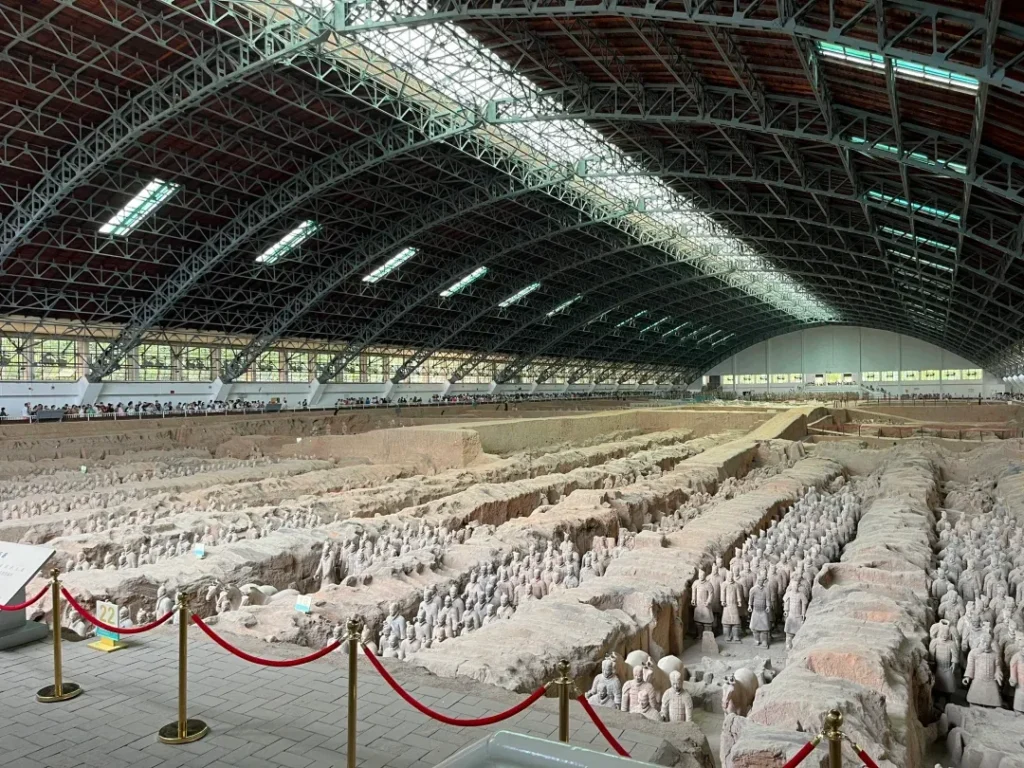
Every standing, intact terracotta warrior we see today is the result of months or even years of effort by archaeologists and artifact restorers! They are a miracle created by history, technology, and human ingenuity.
How many terracotta warriors have been unearthed? The answer is approximately 2,000. This accounts for roughly one-quarter of the 8,000-member “underground army.” These “awakened” soldiers form an awe-inspiring military formation in Pit 1, showcase the elite’s prowess in Pit 2, and guard the command center in Pit 3.
However, what is more important is that we understand that the approximately 6,000 “sleeping” terracotta warriors have not been forgotten. They have been carefully left in the embrace of Mother Earth out of the deepest respect and protective intent. This is the wise choice of modern people facing priceless cultural heritage: not rushing to complete it all at once, not seeking to possess everything, but instead safeguarding history’s gifts with the utmost caution, leaving the opportunities for exploration and discovery to a wiser future.
As you gaze upon these silent warriors in the pit, you not only see Emperor Qin Shi Huang’s ambition to unify China and the extraordinary craftsmanship of the Qin dynasty artisans, but also the responsibility and foresight of modern people in safeguarding the torch of civilization. The 2,000 terracotta warriors that have been unearthed, along with the treasures buried deep underground, together form one of the most extraordinary chapters in human history. They belong to China, but even more so to all of humanity.

